Premium by Design: The Art of the TED Experience
How thoughtful details create moments that matter
If you'd like to hear this story in my voice, click the audio player below for a personal narration of my TED2025 experience.
The Choreography of Welcome
What does it mean to experience a premium brand? At TED, it's not about flash. It's about detail. Quiet, confident precision in every touchpoint. You feel it the moment you arrive.
The tone is set as soon as you enter the Vancouver Convention Center. The first thing that hits you is the air, crisp and clean, with a subtle note of cedar and coffee. The space smells like intention. The floors beneath you shine. Natural light pours in from the glass façade, casting gentle shadows across the modern architecture. It's quiet but not sterile. There is the soft murmur of voices and the occasional echo of laughter.
You're greeted not by a check-in table or a line, but by energetic, enthusiastic young staff who offer a genuine welcome. They check your name and gesture toward the escalator. By the time you've reached the top, someone else already knows your name and greets you warmly, escorting you into a lounge designed to feel more like a living room than a lobby. Plush couches are arranged in intimate clusters, a muted color palette of charcoal and warm wood, and soft, indirect lighting that makes you want to linger, not rush.
A staff member emerges from the back, smiling, with your badge already in hand. Not printed at a kiosk. Delivered. This year, a delightful addition: small round pins on each badge indicating how many years you've been attending TED. Mine said "10+," but when I casually mentioned that I'd been attending since 1995, that’s 30 years, they quietly went in the back and returned with a "20+" pin. I later learned there were only 27 of those made this year. That little pin ended up sparking dozens of conversations.
"Wait, you've been coming for 30 years?" they'd ask. "Yes. Since Monterey." Tiny detail, big ripple.
The welcome experience at TED isn't just pleasantly efficient. It's deliberately paced to transition you from the outside world into a different state of mind. The sequential handoffs between staff members, the gradual reveal of the space as you move deeper into it, and even how your credentials are presented. It all feels like a carefully choreographed prologue, setting the stage for what's to come. The design choice here isn't just aesthetic; it's psychological. By the time you've fully arrived, you've already begun to shed the rush and noise of everyday life. You're present. Ready to receive. This is a premium experience by design, not by accident.
The Theater Experience: Echoes of the Globe
The Vancouver Convention Center is a striking piece of architecture. It is glass on the outside and, at its core, a three-story wooden cube. TED had a unique opportunity: the building didn't have a theater, so they built their own.
They partnered with the Rockwell Group to design the TED Theater, which lives inside that wooden cube. It doesn't look like the Globe Theater, but it feels like one, like the recreations you've seen in films. It's all wood, with curved rows of seats and layered intimacy. There's a sense of performance in the space, of being both a witness and a participant. You feel like the ideas shared here belong to a much older storytelling tradition—a place where voices echo off timber, not tech.
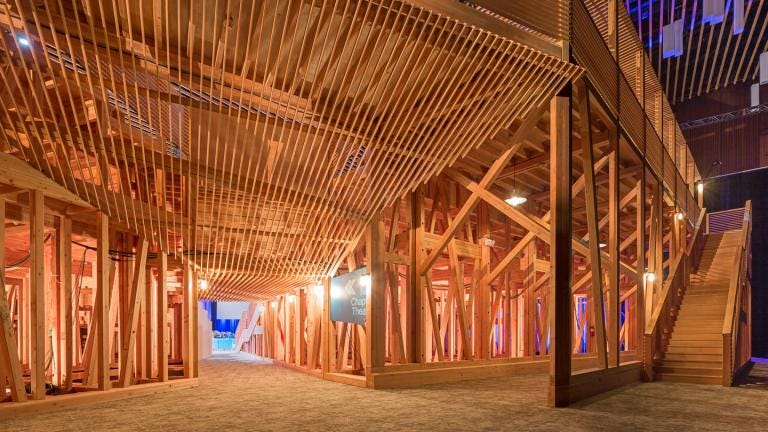
You're transported when the lights dim, and the speaker walks onto that giant red circle, maybe 20 feet in diameter. The space folds in around the talk. There is no projection overload or overstimulation—just human presence framed in wood and warmth.
That theater, design, and ambiance invite stillness, listening, and anticipation. Every time someone steps into the light, there's a hush, not because it's expected but because the space itself calls for it.
The brilliance of the TED Theater design lies in how it simultaneously achieves seemingly contradictory goals. It feels both intimate and grand, both historical and contemporary. The in-the-round design eliminates hierarchy: there are no "best seats," no back row to hide in. Everyone is equally present and equally visible. This architectural choice isn't just aesthetic; it's philosophical. It embodies TED's core belief that ideas are meant to be shared democratically and that conversation happens best in circles, not rows.

The red circle on stage, that 20-foot diameter crimson platform, has become as iconic as TED's logo. It serves both practical and symbolic functions: it orients the speaker, frames their movement, and subtly reminds us that we're witnessing something set apart from ordinary discourse. The circle evokes ancient traditions of gathering around fires to share stories, of arenas where important truths are tested, of the cyclical nature of ideas themselves. That's intentional experience design at work: using physical space to evoke feeling, memory, and meaning.
The Invisible Infrastructure of Experience
The Vancouver Center has three levels, and TED ensures you never feel disoriented. You're guided with quiet precision, whether you take the escalator, stairs, or elevator. Elevator doors are wrapped in custom graphics aligned with the year's theme: "Humanity Reimagined."
They even placed large bouquets of fresh spring flowers at the base of signs to increase their attractiveness and bring the outside in. There's no clutter, no loud branding, just elegant, human-centered design.
And it's not just functional. It feels thoughtful. As an attendee, you're never left wondering where to go next. You're never overloaded. These decisions are made not for flash but for flow. It made me feel like TED was anticipating my needs, like someone had walked through this exact path dozens of times with my experience in mind. It's the kind of design that vanishes because it works so well.
Every detail speaks. For example, one of my favorites this year was the PwC activation space. It looked like a whimsical 1950s diner perched over the water from the outside. Pastel colors, chrome signage, the works. But through the swinging double doors? A hidden speakeasy. Low light, comfortable chairs, quiet conversations. You needed a password to enter, yes. Once inside, they gave you a special TED pin that allowed future access. It was playful. Memorable. TED at its best: immersive and surprising.
What makes the TED experience so seamless is this invisible infrastructure, the systems and details you don't notice until you start looking for them. The precisely timed session breaks that somehow always give you just enough time for a conversation and a bathroom visit before the next talk. The sound design changes as you move from the theater to the lounge areas, subtly shifting your energy. The staff who appear exactly when you need them and seem to vanish when you don't.
I noticed how the digital and physical worlds were thoughtfully integrated this year. The TED Connect app didn't feel like an afterthought. It was an extension of the physical space, with the same design language and the same attention to detail. It helped you find sessions, connect with other attendees, and navigate the venue without ever feeling like technology was intruding on the human experience. That's the art of modern premium design: technology should serve the experience, not dominate it.
From Spaces to Faces: The Power of Connection
One of the things I love about TED is how easily connections happen. This year, I noticed more first-timers, "TED Virgins," as we playfully call them, than usual. And I found myself being a kind of unofficial host.
I'd see someone lingering by themselves in the coffee line or sitting alone between sessions, and I'd approach. "Hi, I'm Mark. What brings you to TED?"
A longtime friend, Tom Wujec, who has attended TED for 37 years, has this ritual: he asks people,
"What three things do you want to get out of TED this week?"
I borrowed that, and it works like magic. People open up, feel seen, and you learn what they're chasing.
And that 20+ pin? It did some of the work for me.
"You've been coming how long?" they'd ask. I'd smile. "Since 1995."
It was the perfect bridge from small talk to real conversation.
After thirty years of TED, I've come to understand that the design of the physical space is ultimately in service to human connection. The thoughtful architecture, the careful flow, and the ambient lighting are all calibrated to make people feel comfortable enough to be vulnerable and curious enough to be authentic.
The best premium experiences don't just look good; they make you feel good enough to connect meaningfully with others.
The Coffee Line Community
Every morning, TED's local coffee vendors become unofficial meeting hubs. Espresso, pour-overs, flat whites. The lines are long, but no one cares. The coffee line is where some of the best interactions happen. You meet someone over an oat milk cappuccino, then see them later that afternoon at a session. It becomes a thread, a warm point of familiarity in a sea of strangers.
There's something almost magical about it: you're waiting for caffeine, and suddenly you're talking about AI ethics, urban farming, or what it felt like to walk up the escalators the first morning. These aren't networking chats. They're micro-moments of realness.
Those coffee stations aren't randomly placed. They're strategically positioned at conversational bottlenecks, where traffic naturally slows and people are prone to pause. The seating nearby is arranged to encourage small group conversations, not isolated sipping. Even the selection of coffee vendors speaks to a design philosophy: local roasters, unique methods, and baristas who engage with customers. It creates natural conversation starters.
This year, I noticed how the coffee areas had evolved from simple service stations to fully realized social spaces. Soft seating is arranged in conversational clusters. Small standing tables at just the right height for comfortable gesturing while holding a cup. Acoustic dampening allows for easy conversation without shouting. Even the coffee cups were designed with an extra-wide sleeve that made them comfortable during extended conversations. Nothing about these spaces is accidental. Everything is in service to connection.
The Power of 90 Seconds
On the last night, I explained to someone why I love TED so much. It's the potential of the 90-second interaction. That fleeting moment where someone asks the right question, or you do, and something shifts. I told them,
"A 90-second interaction here can echo for years." And I meant it.
TED is the rare place where someone can say something simple, and it lands just the right way. It is a place where small talk can open up into shared philosophies. You walk away from a minute-and-a-half exchange thinking, "That person gets it."
I've met collaborators, partners, and lifelong friends through these brief encounters. I believe there's an art to showing up fully, even in the short moments. You never know where a quick chat might lead—maybe nothing, maybe everything.
And it's not about pitching or performing. It's about presence. When you meet someone at TED, and you're both truly present, 90 seconds is all it takes to shift the trajectory of a day or a life.
In my thirty years attending TED, I've watched the conference grow from several hundred people to nearly two thousand, yet these brief, meaningful exchanges have remained at its heart. I think that's because TED has maintained its commitment to creating conditions where these moments can flourish: designing spaces that encourage lingering, programming that includes ample transition time, and a culture that values the unplanned conversation as much as the curated talk.
Creative Sparks: The Oddly Useful TED Effect
Part of how I introduced myself this year would be as one of the members of the Santa Barbara AI Collective, a group assembled to foster community, conversations, and collaborations around AI back home. One of my projects is Oddly Useful Robots, which is another story entirely.
During one of the sessions, I saw an image on the big screen during a talk that immediately caught my attention. I was intrigued by its broad, flat stroke of oil, which reminded me of a mosaic.
Following that inspiration, I pushed the image through my Vision Forge robot while waiting for the next speaker to start, creating this amazing representation of myself. This wasn't just a fun tech experiment. It was part of the instant inspiration I felt throughout the week, the way that TED continuously triggers new connections and creative possibilities that you might never have considered otherwise.
That's another aspect of premium experience design: creating spaces where creativity and unexpected connections are not only possible but inevitable.
Nourishment: A Global Feast for the Mind and Body
Feeding 1,800 people three meals a day for a week is no joke. But TED doesn't just feed you. It nourishes your mind, body, and soul.
Breakfast offered various thoughtful choices: vegan coconut chia pudding, smoked salmon, and fresh-squeezed juices with curious flavor combinations. For lunch, they balanced carbs and energy. Yes, there were sandwiches, but you could also find high-protein options, salads, and surprises like pomegranate-dusted roasted vegetables.
Snacks appeared in quiet corners: a wall of grab-and-go items like roasted nuts, dried mango, and NeuroMints. There were no vending machines, no sugar crashes, just calm, intentional fuel.
And then there were the food trucks. Six or seven parked along the patio, overlooking the Bay every day. Filipino adobo pork sandwiches from Shameless Buns, gourmet grilled cheese, and Japanese curry rice. It was like a miniature food festival with TED as your backdrop.
What elevates the culinary experience at TED beyond mere sustenance is its integration into the event's overall design philosophy.
Food isn't an afterthought; it's a cornerstone of the experience. Meal times aren't just fuel stops; they're designed as social occasions, intellectual continuations, and cultural explorations.
The variety ensures that everyone finds not just something they can eat but something that delights them. The quality signals respect for the attendee's complete experience.
Even the timing of meals shows thoughtful design. Breakfast doesn't end abruptly before the first session. It extends, allowing early and late risers alike to find nourishment on their schedule. Lunch offers multiple waves to prevent crowding. Dinner incorporates varied settings. Some nights, it's served in the main space, and other nights, it's hosted at off-site venues, creating rhythm and surprise throughout the week.
Meeting the Chef
Midway through the week, I walked to the Info Hub and asked, "Is there any way I could meet the head chef?" They blinked. "No one has ever asked that before," they said. A few hours later, I got a message through TED Connect inviting me on a kitchen tour.
Walking into the back-of-house operations felt like stepping into an entirely different TED universe, one humming with efficiency and craftsmanship. Massive prep stations, walk-ins organized with precision, and entire areas dedicated to specific culinary experiences, like the TED Countdown breakfast. This wasn't just event catering. It was culinary artistry on a global stage.
Meeting the executive chef and his team was a highlight. We talked shop and shared stories, and I expressed my admiration for the logistical ballet they executed daily. Their pride in the work was palpable, and our exchange created a real moment of mutual respect, chef to chef.
From that point forward, whenever we crossed paths, we'd greet each other with a cheerful "Hey, Chef!"
It wasn't just a novelty. It was a thread of human connection, woven into the fabric of my week.
It reminded me that behind TED's polish and perfection is a network of real people doing exceptional work with care and joy. Being welcomed into their world, even briefly, added a new layer of appreciation to every meal I had after that.
What struck me about the culinary operation was how it reflected the same design principles evident throughout TED. The kitchens were organized for both efficiency and innovation. The team was diverse, bringing global perspectives to the menu. There was a clear respect for ingredients and the people consuming them. Even in this behind-the-scenes space, nothing felt arbitrary or unconsidered. Everything, from the flow of food preparation to the presentation on the plate, was designed with intention.
Reunion: Back in the Room
It had been five years since I last attended TED in person. I've been running TEDxSantaBarbaraLive, keeping the community going home. But being in the room again is a thousand percent more satisfying.
I saw old friends I hadn't seen since before COVID locked us all inside. The kind of friends where you hug for just a moment longer. You pick up mid-sentence. There's no warming up, just warmth. We'd sit next to each other during talks and then debrief in the hallways. And at night? Late conversations, the kind that stretch until someone finally says,
"Okay, we really should go to bed."
One night, I was at a table with friends I had met over the past three decades of TED. We had all changed somehow- new roles, cities, and stories. How swiftly the conversation transitioned from catching up to deeper, soul-level topics struck me. We weren't reminiscing about old talks; we discussed legacy, what still wakes us up at night, and the work left to be done. It was intimate and honest, reminding me why TED is as much about people as it is about ideas.
The brilliance of TED's experience design lies in its ability to accommodate both first-time wonder and longtime reunion. Newcomers are welcomed into an engaging and easily navigated space while veterans discover familiar rituals alongside fresh surprises. This balance between innovation and tradition and between novelty and familiarity represents one of the most challenging aspects of experience design to master. Yet, TED achieves this balance year after year.
TEDx Tribe: Quiet Connections
The 30 or so TEDx Organizers first connected on the opening day, Monday, and later took a group photo in front of the iconic TED letters set up in the main entrance, the same backdrop that served hundreds of attendees taking photos throughout the week. You can barely see the letter D on the right.
Our first gathering had no formal agenda, apart from a warm welcome from Jay Herratti, the CEO of TED and former head of TEDx. He is well known and cherished by organizers of TEDx events globally. Meeting this small group and hearing about their events and how they came to attend "big TED" (as some refer to it) was truly special.
Throughout the week, we crossed paths organically in sessions, on escalators, and over lunch, and every time, it was a little burst of familiarity and shared purpose.
The TEDx community is a unique thread in the TED fabric. We're the ones who carry the torch back home, organizing local events, training speakers, and shaping conversations in our cities. Seeing each other at TED reminds us that we're part of something bigger. We may not have had a breakout room or a formal schedule this time, but we didn't need one. Our connections were woven into the flow of the week.
What I love about the TEDx community is how it embodies TED's design philosophy on a global scale. Each of us takes the core experience, the red circle, the short-form talk format, and the commitment to ideas worth spreading and adapts it to our local context while maintaining the essence. We're translators of an experience, keepers of a design language that transcends geography and culture. This year, I spoke with TEDx organizers from Japan, Brazil, Kenya, and London, each bringing their unique perspective while honoring the shared framework.
Bringing It Home: From Experience to Impact
Next weekend, I'll share a "Best of TED 2025" event at the Santa Barbara Public Library. Two hours of curated talks that moved me most will be offered as nourishment for my community.
TED fills me up. And when I'm full, I have more to give. That's the thread I carry forward: curiosity, generosity, and the courage to ask someone in line, "What brought you here?"
What I'm bringing home reminds me of how powerful thoughtfully designed experiences can be. In Santa Barbara, we may not have the budget or the team size of TED Vancouver, but we can bring the same attention to detail and commitment to creating spaces where ideas and people connect. We can consider every touchpoint, from how we welcome people to seating arrangements. We can design for presence, for connection, for moments that matter.
I believe this is the ultimate value of premium experience design: not luxury for its own sake, but creating the conditions where transformation becomes not just possible but probable, where people feel safe enough to be challenged, comfortable enough to be uncomfortable with old ideas, and nourished enough to grow new ones.
Final Reflection: Actionable Hope
If I had to distill TED2025 into a single idea, it would be this: Actionable Hope. This powerful concept came during Aqueela Sherrills' talk as part of the Audacious Project cohort. Sherrills, who heads one of the organizations in the current cohort of the Audacious Project (a collaborative funding initiative housed at TED), presented his community-led "Scaling Safety" initiative that empowers local leaders to address violence.
These two words, "Actionable Hope," resonated throughout the conference. After he said it, the phrase was repeated often, from the stage and in conversations throughout the venue.
The phrase captures exactly what TED represents: Not blind optimism, not toxic positivity, but intentional, grounded, purpose-driven hope. The kind that says: the world is complex, and we're still going to show up” From the speakers to the food to the conversations in the coffee line, this year's TED was a call to action through the lens of possibility, not just imagining a better future but actively participating in its creation.
Yes, ideas change everything (the TED tagline); yet, if you want something to hang on to in these challenging times, "Actionable Hope" is a perfect pairing of words.
That's what I came home with. That's what I'm carrying forward.

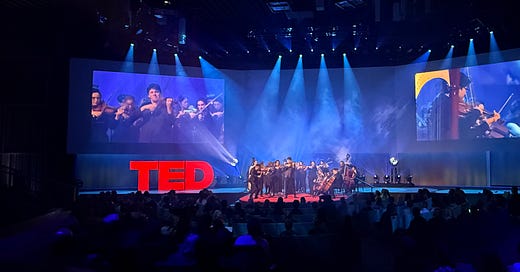





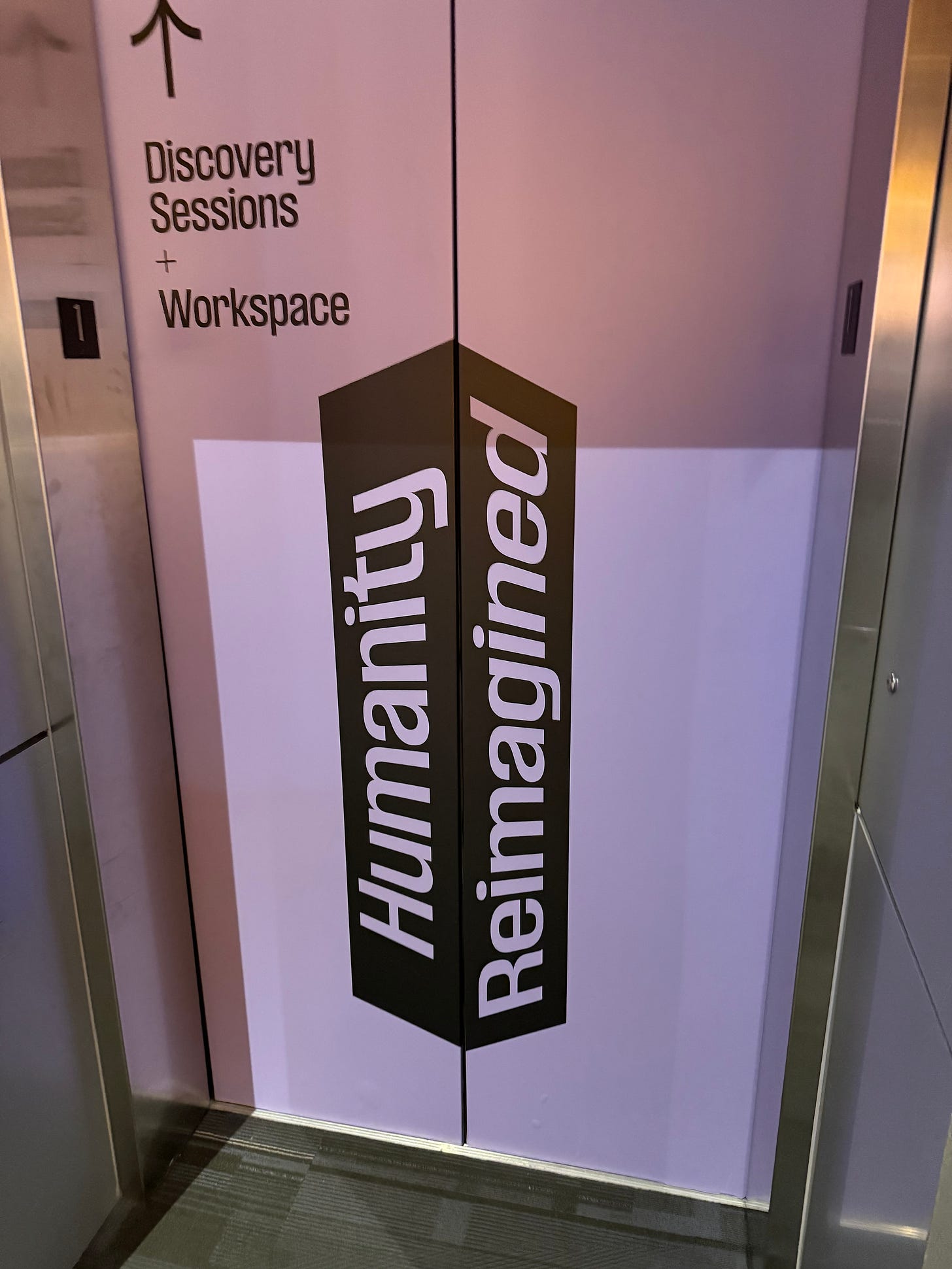
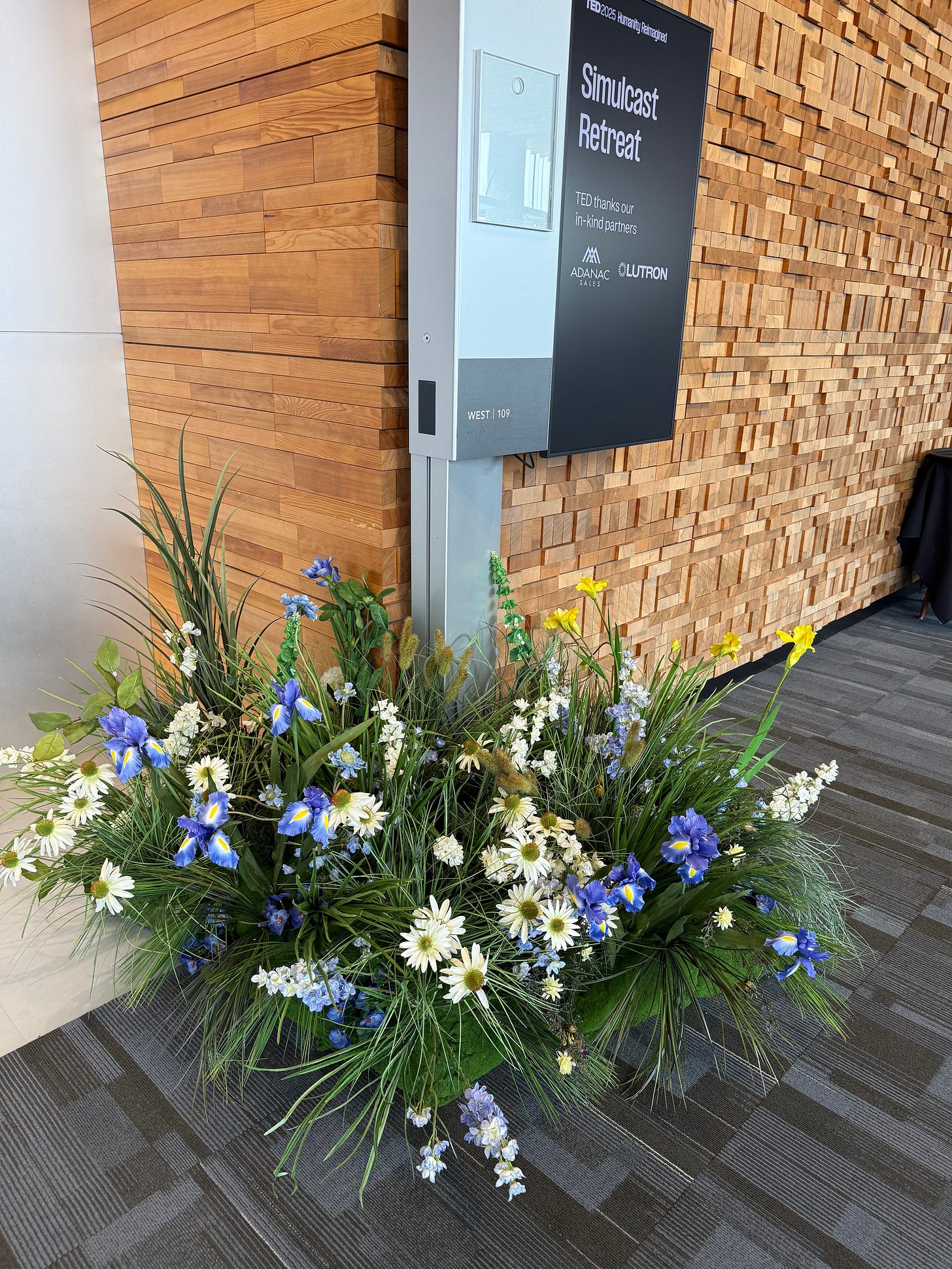

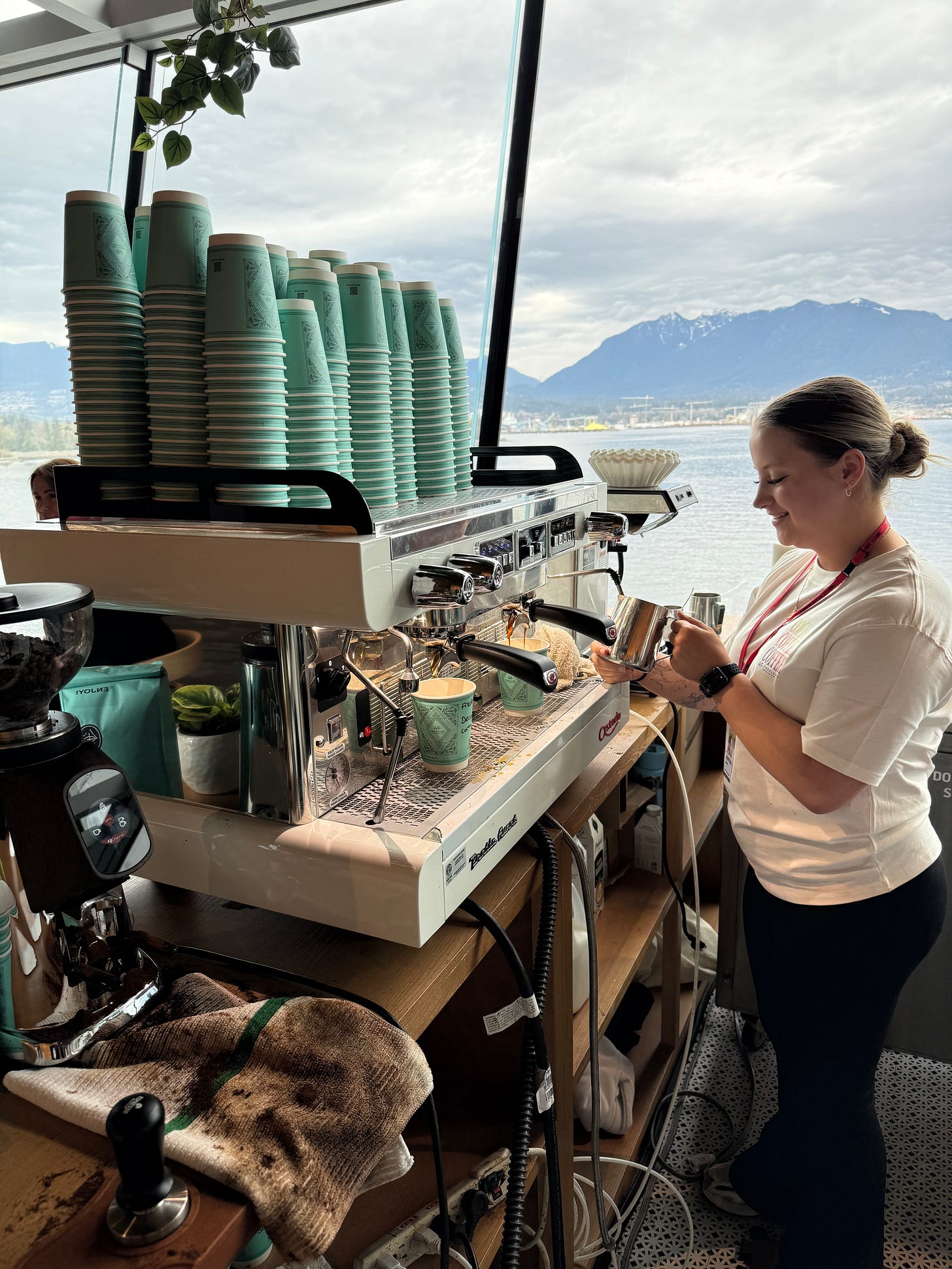
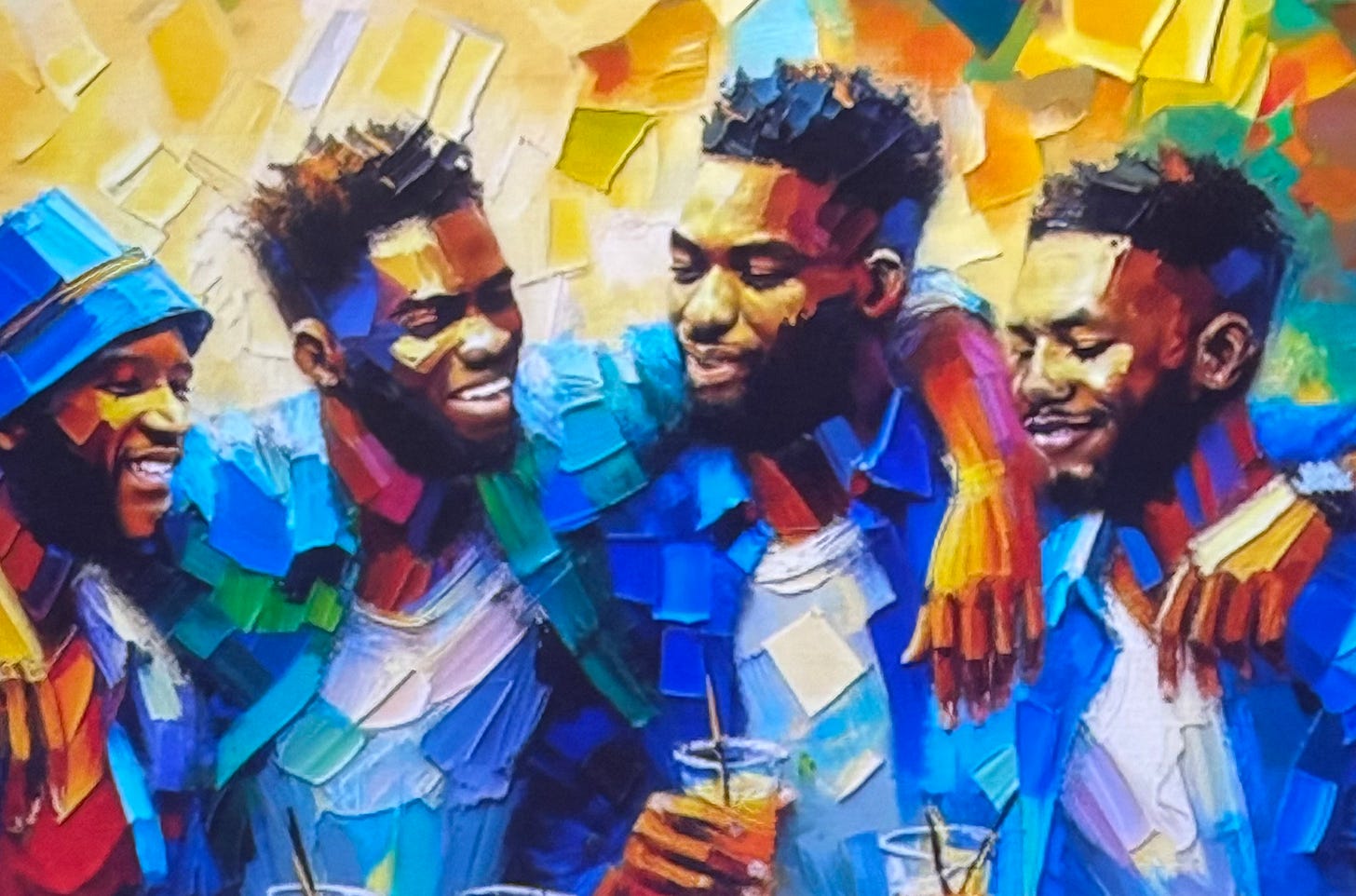

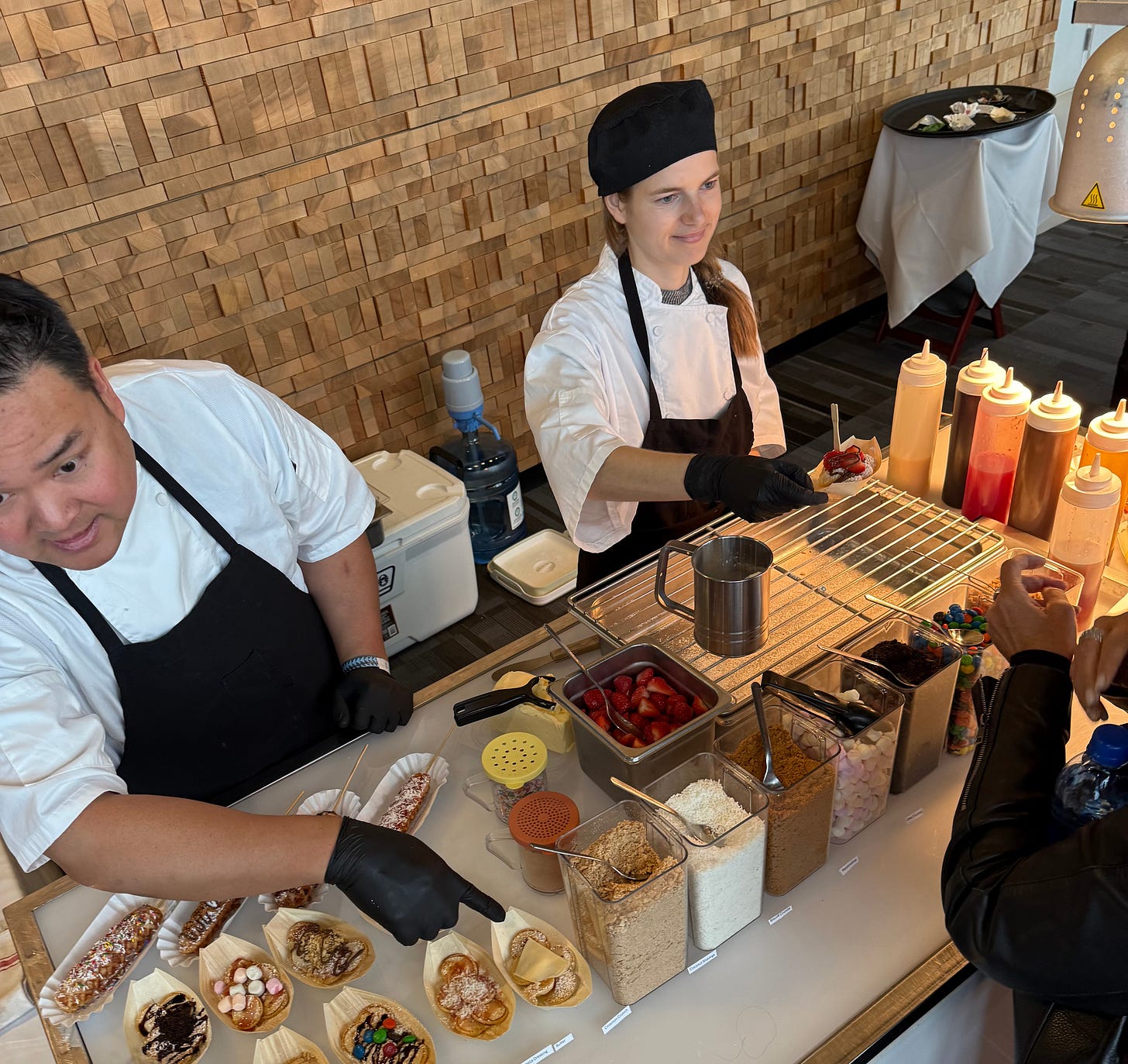
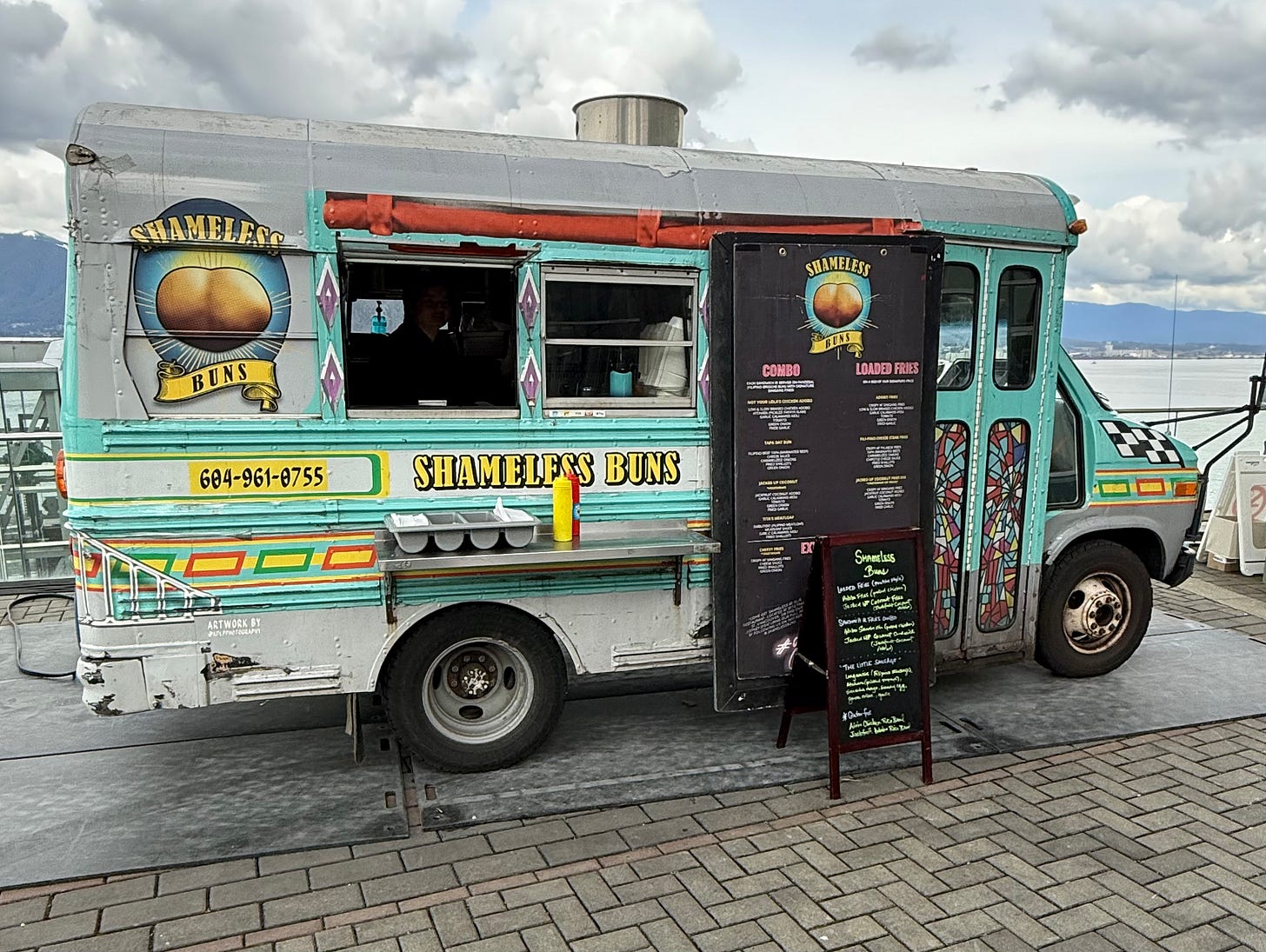
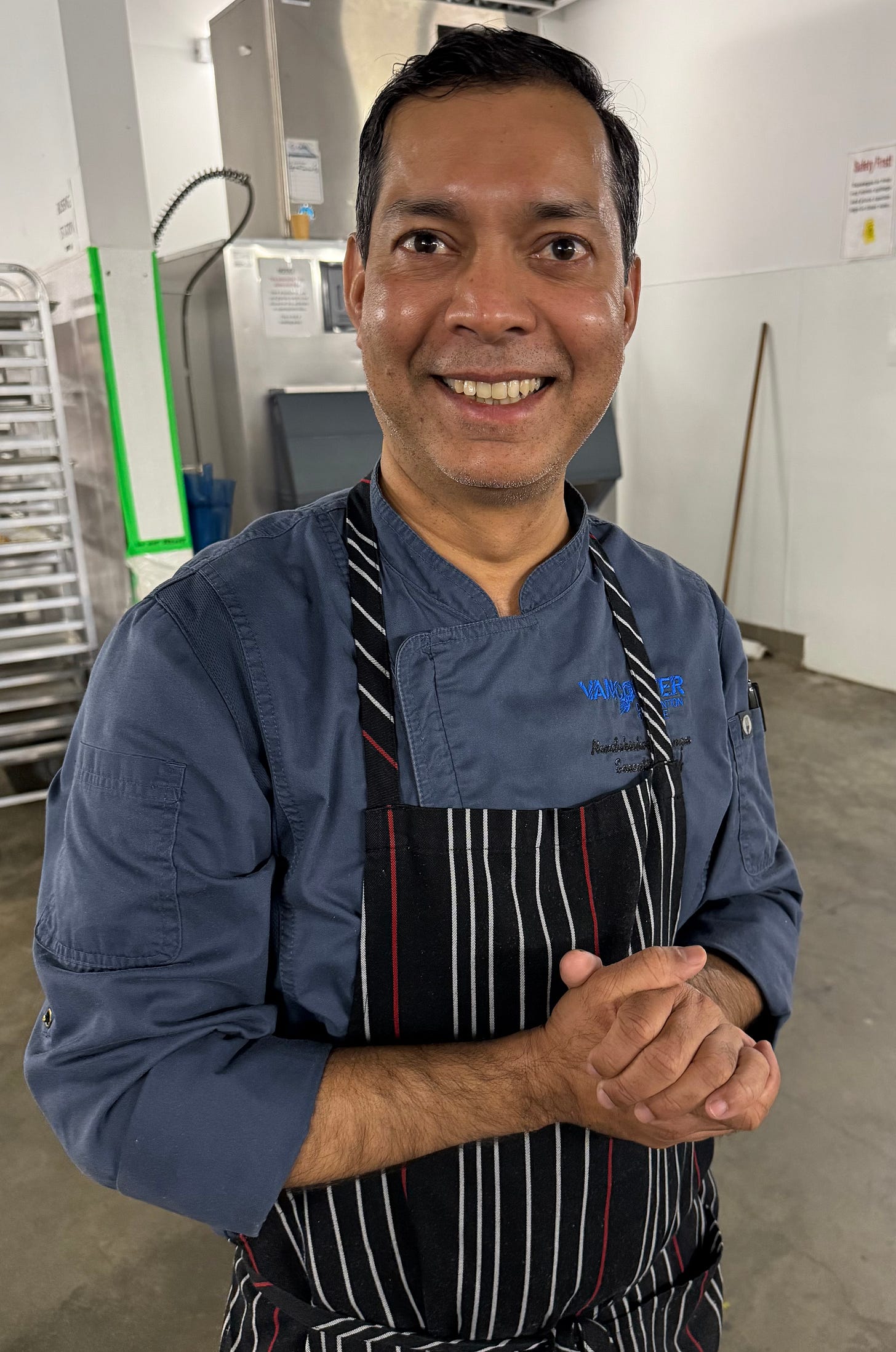
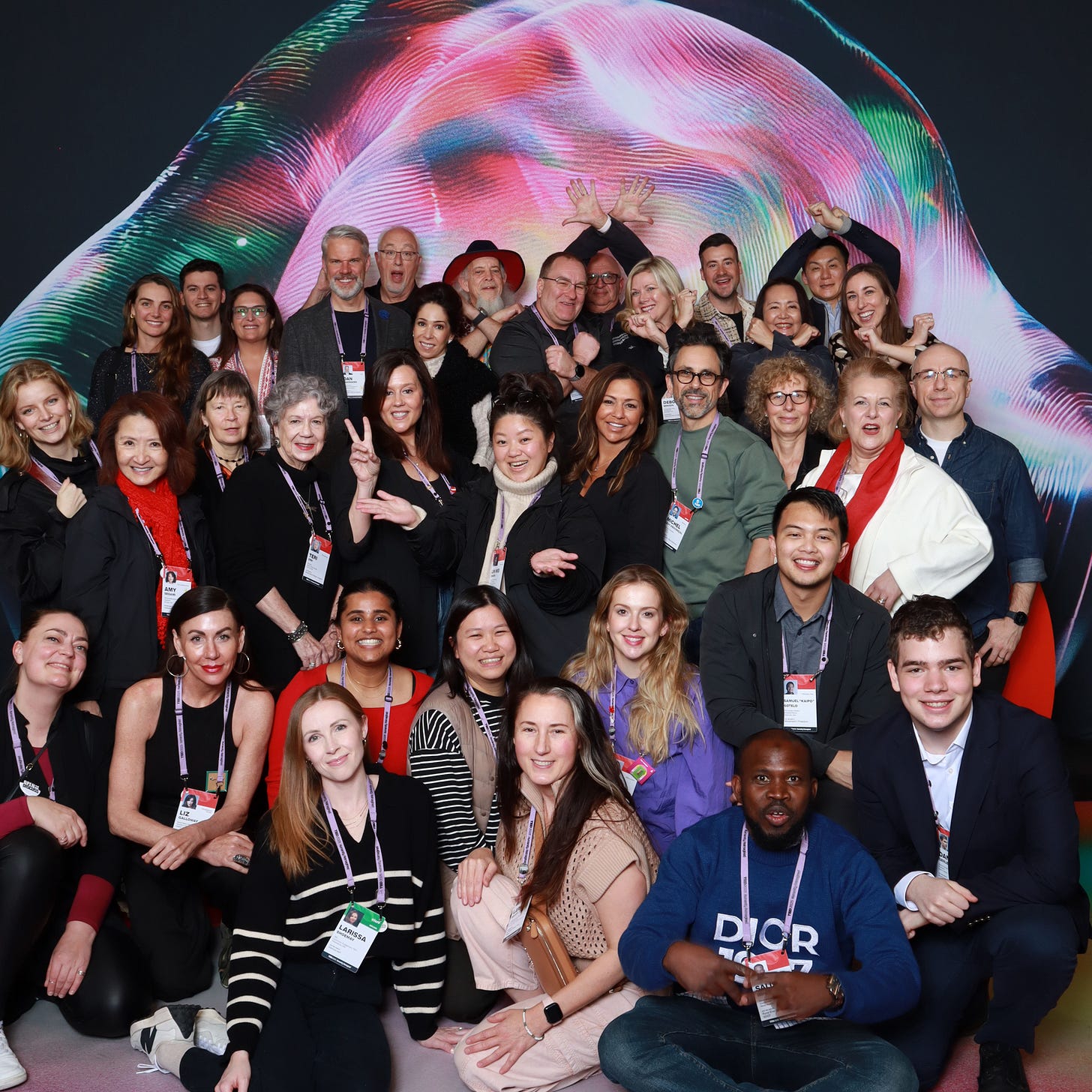
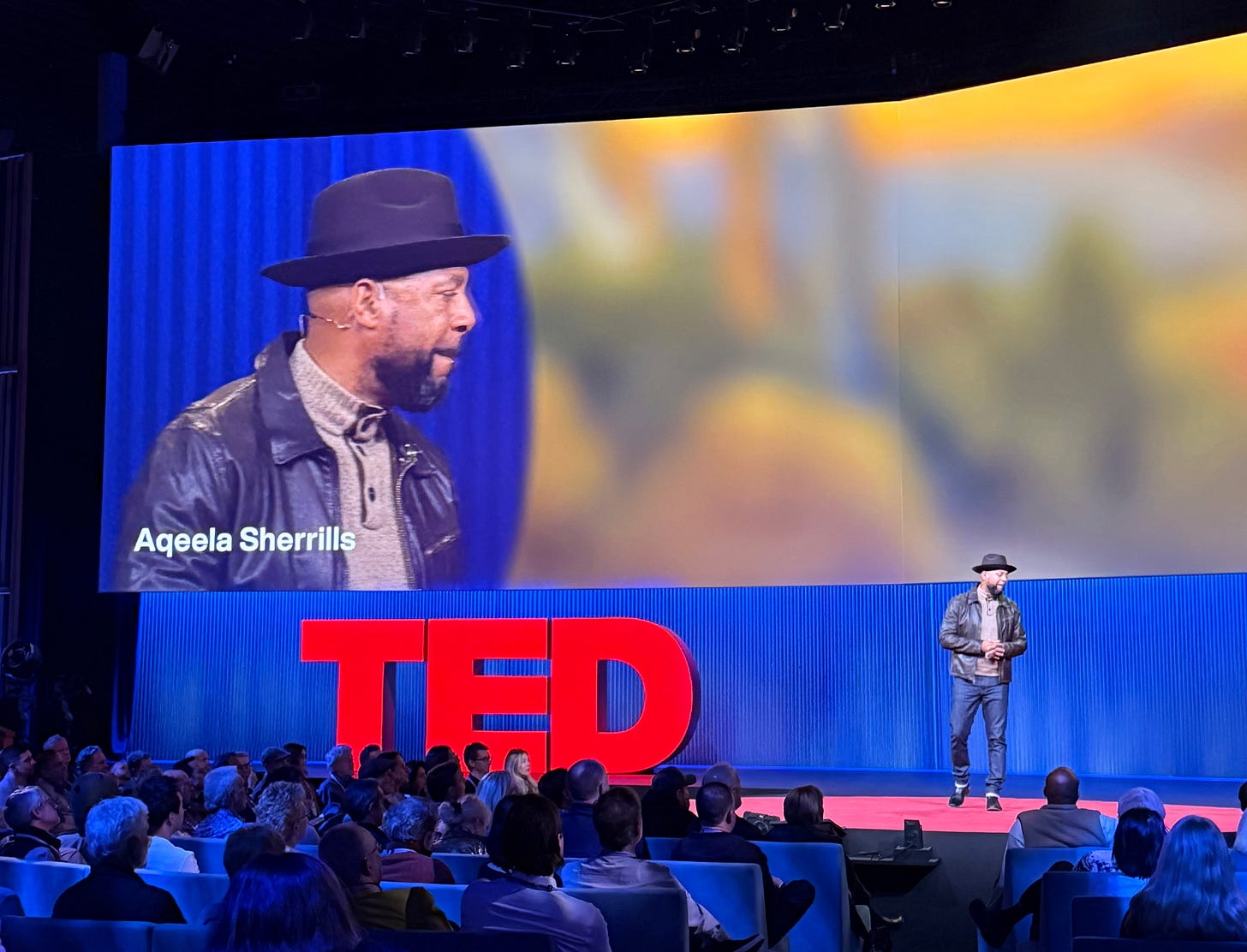

Oh my gosh, what a fantastic "second hand" experience you've shared. Thank you. We're about to embark on the design of a new conference center here in Lincoln, Nebraska. This article will be referenced often.
Mark, great TED nostalgia from this wonderfully written post. Hope you've been well. I wanted to add that the beautiful mosaic painting image that inspired you is by Andrew Murray of https://androosart.com/ and best to you.